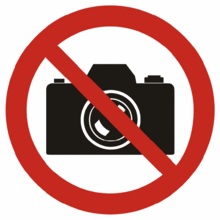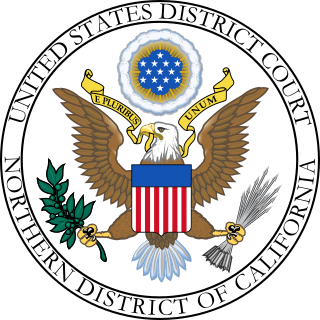Related Research Articles

Fair use is a doctrine in United States law that permits limited use of copyrighted material without having to first acquire permission from the copyright holder. Fair use is one of the limitations to copyright intended to balance the interests of copyright holders with the public interest in the wider distribution and use of creative works by allowing as a defense to copyright infringement claims certain limited uses that might otherwise be considered infringement. The U.S. "fair use doctrine" is generally broader than the "fair dealing" rights known in most countries that inherited English Common Law. The fair use right is a general exception that applies to all different kinds of uses with all types of works. In the U.S., fair use right/exception is based on a flexible proportionality test that examines the purpose of the use, the amount used, and the impact on the market of the original work.

Itar-Tass Russian News Agency v. Russian Kurier, Inc., 153 F.3d 82, was a copyright case about the Russian language weekly Russian Kurier in New York City that had copied and published various materials from Russian newspapers and news agency reports of Itar-TASS. The case was ultimately decided by the United States Court of Appeals for the Second Circuit. The decision was widely commented upon and the case is considered a landmark case because the court defined rules applicable in the U.S. on the extent to which the copyright laws of the country of origin or those of the U.S. apply in international disputes over copyright. The court held that to determine whether a claimant actually held the copyright on a work, the laws of the country of origin usually applied, but that to decide whether a copyright infringement had occurred and for possible remedies, the laws of the country where the infringement was claimed applied.

The idea–expression distinction or idea–expression dichotomy is a legal doctrine in the United States that limits the scope of copyright protection by differentiating an idea from the expression or manifestation of that idea.
The threshold of originality is a concept in copyright law that is used to assess whether a particular work can be copyrighted. It is used to distinguish works that are sufficiently original to warrant copyright protection from those that are not. In this context, "originality" refers to "coming from someone as the originator/author", rather than "never having occurred or existed before".

The intellectual property rights on photographs are protected in different jurisdictions by the laws governing copyright and moral rights. In some cases photography may be restricted by civil or criminal law. Publishing certain photographs can be restricted by privacy or other laws. Photography can be generally restricted in the interests of public morality and the protection of children.

Bridgeman Art Library v. Corel Corp., 36 F. Supp. 2d 191, was a decision by the United States District Court for the Southern District of New York, which ruled that exact photographic copies of public domain images could not be protected by copyright in the United States because the copies lack originality. Even though accurate reproductions might require a great deal of skill, experience, and effort, the key element to determine whether a work is copyrightable under US law is originality.

In copyright law, a derivative work is an expressive creation that includes major copyrightable elements of a first, previously created original work. The derivative work becomes a second, separate work independent from the first. The transformation, modification or adaptation of the work must be substantial and bear its author's personality sufficiently to be original and thus protected by copyright. Translations, cinematic adaptations and musical arrangements are common types of derivative works.
The copyright law of the United States grants monopoly protection for "original works of authorship". With the stated purpose to promote art and culture, copyright law assigns a set of exclusive rights to authors: to make and sell copies of their works, to create derivative works, and to perform or display their works publicly. These exclusive rights are subject to a time and generally expire 70 years after the author's death or 95 years after publication. In the United States, works published before January 1, 1929, are in the public domain.
In copyright law, the legal status of hyperlinking and that of framing concern how courts address two different but related Web technologies. In large part, the legal issues concern use of these technologies to create or facilitate public access to proprietary media content — such as portions of commercial websites. When hyperlinking and framing have the effect of distributing, and creating routes for the distribution of content (information) that does not come from the proprietors of the Web pages affected by these practices, the proprietors often seek the aid of courts to suppress the conduct, particularly when the effect of the conduct is to disrupt or circumvent the proprietors' mechanisms for receiving financial compensation.

Religious Technology Center v. Netcom On-Line Communication Services, Inc., 907 F. Supp. 1361, is a U.S. district court case about whether the operator of a computer bulletin board service ("BBS") and Internet access provider that allows that BBS to reach the Internet should be liable for copyright infringement committed by a subscriber of the BBS. The plaintiff Religious Technology Center ("RTC") argued that defendant Netcom was directly, contributorily, and vicariously liable for copyright infringement. Netcom moved for summary judgment, disputing RTC's claims and raising a First Amendment argument and a fair use defense. The district court of the Northern District of California concluded that RTC's claims of direct and vicarious infringement failed, but genuine issues of fact precluded summary judgment on contributory liability and fair use.
In Canada, the Copyright Act provides a monopoly right to owners of copyrighted works. This implies no person can use the work without authorization or consent from the copyright owner. However, certain exceptions in the Act govern circumstances where a work will not be held to have been infringed.
Fixation in Canadian copyright law is a threshold consideration that must be used in copyright infringement cases by courts to determine if copyright actually exists.

Murphy v. Millennium Radio Group LLC is a 2011 U.S. Third Circuit Court of Appeals case concerning the Digital Millennium Copyright Act (DMCA), copyright infringement, and defamation with regards to the online posting of a photocopy of a magazine photograph. After New Jersey radio station WKXW 101.5 copied onto its website a magazine picture of two of the station's talk show hosts, Craig Carton and Ray Rossi, the photographer of the picture, Peter Murphy, brought a suit against station owner Millennium Radio Group, as well as Carton and Rossi. The Third Circuit ruled that the station's actions did constitute both a violation of the DMCA and copyright infringement, which vacated the district court's judgment.
Playboy Enterprises, Inc. v. Starware Publishing Corp. 900 F.Supp. 433 was a case heard before the United States District Court for the Southern District of Florida in May 1995. The case revolved around the subject of copyright infringement and exclusive rights in copyrighted works. Plaintiff Playboy Enterprises filed a motion for partial summary judgment of liability of copyright infringement against defendant Starware Publishing Corporation. Specifically, Playboy Enterprises ("PEI") argued that Starware's distribution of 53 of Playboy's images, taken from an online bulletin board, and then sold on a CD-ROM, infringed upon PEI's copyrights. The case affirmed that it was copyright infringement, granting Playboy Enterprises the partial summary judgment. Most importantly, the case established that "The copyright owner need not prove knowledge or intent on the part of the defendant to establish liability for direct copyright infringement."
Sir Colin Ian Birss is a judge of the Court of Appeal of England and Wales.

Broderbund Software Inc. v. Unison World, Inc., 648 F. Supp. 1127, 1133, was a United States District Court for the Northern District of California software case, initially important in determining how U.S. copyright law applied to the look and feel presented by a software product. It took an expansive position which later courts increasingly rejected.
Navitaire Inc v Easyjet Airline Co. and BulletProof Technologies, Inc., is a decision by the England and Wales High Court of Justice. The case involved a copyright infringement claim brought by Navitaire Inc. ("Navitaire") against EasyJet Airline Company ("EasyJet") and Bulletproof Technologies, Inc. ("Bulletproof") with regards to software used to construct an airline booking system. Curiously, it was not claimed that Defendant had access to the original source code or that Defendant's source code resembled Plaintiff's in any way.

Designer Guild Limited v. Russell Williams (Textiles) Limited, is a leading House of Lords case on what constitutes copying in copyright infringement cases. The House of Lords considered whether there was infringement of a fabric design. Although both the copyrighted work and the infringing design were different in detail, the overall impression of the designs was the same. This decision is significant because the House of Lords ruled that copyright infringement is dependent on whether the defendant copied a substantial portion of the original work, rather than whether the two works look the same. The outcome suggests that in the United Kingdom the overall impression of a copyrighted work is protected if the copied features involved the labour, skill and originality of the author's work, even if the copyrighted work and infringing work are different in detail.
Penguin Books Ltd. v. India Book Distributors and Others, was a 1984 Delhi High Court court case. Penguin Books Ltd. of England brought a suit for perpetual injunction against the respondents, India Book Distributors of New Delhi, to restrain them from infringing Penguin's territorial license in 23 books, the subject matter of the suit.

Mannion v. Coors Brewing Co. is a 2005 copyright case decided by the United States District Court for the Southern District of New York. It concerns the issue of copyrightability in photography. Jonathan Mannion, the plaintiff, sued the brewer and its advertising agency, Carol H. Williams Advertising (CHWA), alleging they had too closely copied an image he took of basketball star Kevin Garnett.
References
- 1 2 3 Judgment
- ↑ "Photographers face copyright threat after shock ruling". Amateur Photographer.
- ↑ Nick Farrell. "UK copyright law wades in on photoshopping: Could end up before the beak".